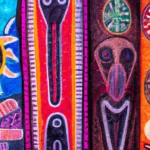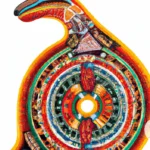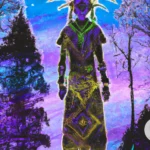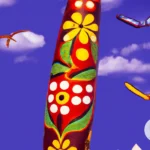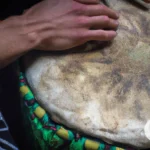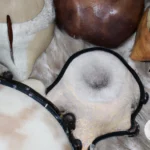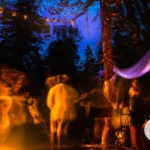The Concept of Dreamtime
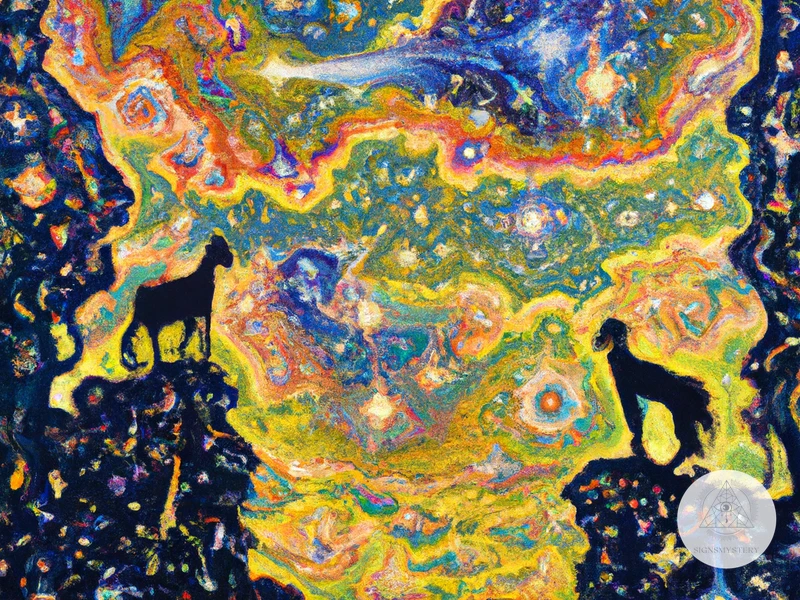
The concept of Dreamtime is fundamental to understanding Aboriginal spirituality. It is a term used to describe the creation period in which the world was formed by ancestral beings, who are often referred to as “The Dreaming”. The Dreaming is seen as a living energy that connects all things in the world.
During Dreamtime, these ancestral beings came to the earth and created all natural features such as mountains, rivers, and animals. They also created the spiritual laws by which Aboriginal people continue to live today. The ancestral beings are believed to still exist and to be contactable through dreams, visions, and ceremonies.
Some key aspects of Dreamtime that are important to understand include:
- The belief in ancestral spirits
- The idea of a universal creation story
- The understanding that everything in the world is interconnected and interdependent
Dreamtime is not a static concept and it has evolved over time, as each generation has added its own interpretation to the story. The diversity of Dreamtime stories reflects the vast cultural differences between the various Aboriginal groups throughout Australia.
Additionally, the importance of Dreamtime is not just confined to Aboriginal people. Many people from other cultures have developed an interest in the concept of The Dreaming and its powerful spiritual insights. The concept of Dreamtime shares similarities with other shamanic traditions, such as African shamanism, Japanese shamanism, and shamanism of Indigenous cultures in Central Asia and Siberia.
Dreamtime is a complex concept that is central to Aboriginal spirituality. It is a key to understanding their culture, spiritual beliefs, and worldview. Its broad and diverse set of teachings and stories can provide insights that extend well beyond the bounds of Aboriginal society.
Ancient Wisdom of the Aboriginal People
The Aboriginal people’s culture is one of the most significant in the world and holds much ancient wisdom. Their traditions and beliefs have been passed down through generations, containing vast knowledge of the natural world, spirituality, and healing practices. Aboriginal spirituality focuses on the interconnectedness of all things and the importance of living in harmony with the environment. Their spiritual practices include the use of music, dance, art, and shamanic rituals that connect them with the spiritual realm. The wisdom of the Aboriginal people is unique and fascinating, with similarities and differences to other shamanic cultures worldwide. To learn more about the similarities and differences between shamanic traditions, explore this article.
Shamanic Beliefs and Practices
Shamanism is a spiritual practice that originated in various cultures around the world, including Aboriginal culture. In Aboriginal culture, Shamanic beliefs and practices are deeply rooted and highly respected.
One of the key components of Shamanism is the belief in the spirit world and the ability to communicate with spirits. Shamans are believed to have the ability to reach, interact with, and influence the spirit world, making them powerful healers and guides. The Aboriginal Shamans, known as Kurdaitcha, were believed to have the power to both heal and harm people.
Shamans in Aboriginal culture also believe in totems, which are powerful animal spirits believed to provide guidance, protection, and healing. Totems are an important part of Aboriginal Shamanism, and Shamans often work closely with them in their healing and spiritual practices.
Smudging is another important Shamanic practice in Aboriginal culture. It is a cleansing ritual that involves burning sacred herbs, such as sage, to purify the air and remove negative energy. The smoke is believed to carry prayers up to the spirit world and promote healing and spiritual growth.
Vision quests are also an important part of Aboriginal Shamanic practice. These quests involve going on a journey to connect with the spirit world and gain wisdom and insight. The journey is often a solitary one and can be challenging both physically and mentally.
Aboriginal Shamanic practices and beliefs share similarities with other Shamanic cultures around the world, such as Native American and African Shamanism. However, each culture has its unique traditions and practices.
Animals and Totems in Aboriginal Culture
Animals and totems hold a significant place in Aboriginal culture and spirituality. These indigenous people believe that every animal, plant, and even natural phenomenon has a spiritual essence and an inherent connection to the human world. Aborigines assigned specific totems to every member of their clan, which is an emblematic representation of the individual’s spiritual lineage and connection to the land and the environment. Totems are animals or other natural objects that people regard with respect and believe possess special powers and attributes.
Aborigines believe that their totems teach them about their own identities and beliefs, as well as their place within their community and connection to the natural world. According to their beliefs, every animal has a unique role in maintaining their world’s balance, and harming or unnecessarily killing any animal that bears significance to an individual’s totem can cause harm to the totem’s spiritual lineage.
Many Aboriginal songs, dances, and artwork depict the animals and totems that represent their spirituality. They use these totems in their spiritually inclined activities such as hunting, fishing, and farming since these practices are interconnected with their cultural identity. Some totems include kangaroos, emus, snakes, turtles, and many more animals that they celebrate and revere.
Interestingly, the concept of animal totems is not unique to Aboriginal spirituality only. Many other shamanic cultures around the world have a similar concept that connects people with their animal spirit guides. For instance, Native Americans have animal totems, and so do African, Central Asian, Siberian, and Japanese Shamanic cultures. This similarity in spiritual concepts proves to us that spiritual conceptions and beliefs are universal and span across all cultures.
The Connecting Power of Rituals and Ceremonies
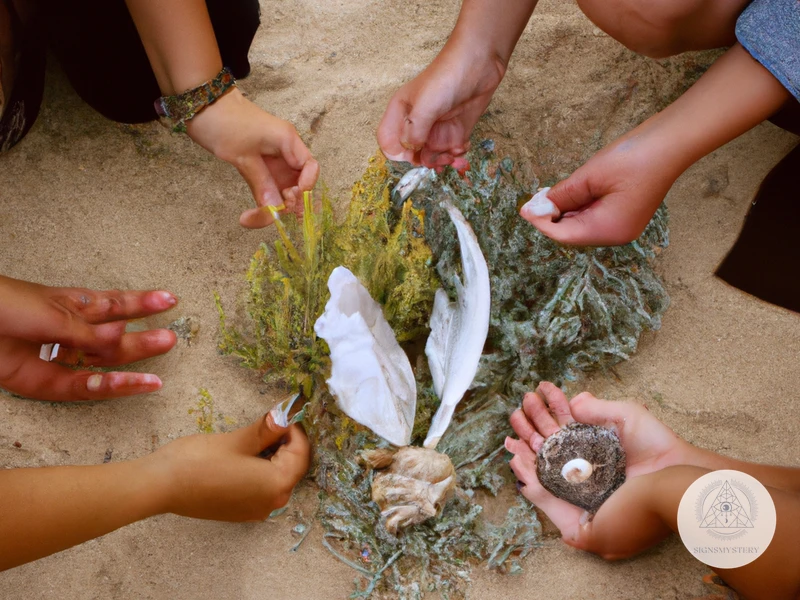
In Aboriginal culture, rituals and ceremonies serve as important means of connecting with the spiritual world. These practices are often passed down through generations and are central to maintaining the community’s cultural identity and spiritual wellbeing. One of the most significant examples of this is the “corroboree,” a ceremonial gathering where dancing, singing, and storytelling are used to connect with the Dreamtime ancestors. Fire plays a crucial role in these ceremonies, symbolizing both purification and the transformative power of the spiritual world. Similarly, traditional musical instruments like the didgeridoo and clapsticks are used to create a rhythmic and sacred atmosphere. Through these rituals and ceremonies, the Aboriginal people find a sense of belonging and connection to their ancestors, the land and each other.
The Significance of Fire and Dance in Aboriginal Culture
In Aboriginal culture, fire and dance have deep spiritual significance and are often used in ceremonies and rituals. Fire is seen as a cleansing and purifying element, capable of driving out negative energy and promoting spiritual growth. The dancing, often accompanied by chanting and singing, is a way of communing with the spirits and ancestors.
The fire is typically lit in a pit or circle, and the flames are tended to throughout the ceremony. The fire’s light and heat are believed to have a transformative effect on the participants, allowing them to connect with the spiritual world and gain insight into their own lives. The smoke from the fire is also seen as a powerful tool, capable of carrying prayers and messages to the spirits.
Dance is equally important in Aboriginal culture, with many different styles and forms of dance being used in various ceremonies. The movements often mimic animals or natural elements, such as the wind and water. The belief is that by embodying these elements, the dancers are able to activate their spiritual power and connect with the spirits.
The combination of fire and dance provides a powerful tool for Aboriginal people to connect with their spiritual heritage and seek guidance. These practices remain an integral part of Aboriginal culture to this day and continue to inspire people around the world.
Internal link: Shamanism in Western Culture
The Role of Music and Art in Spiritual Practice
The Aboriginal people believe that music and art play a significant role in their spiritual practice. They use music and art to connect with the Dreamtime and express their spirituality. Aboriginal music is unique and is created using various traditional instruments like didgeridoos, clapping sticks, and drums. The music is not just a form of entertainment but a way to create a spiritual environment and connect with the spirits. Additionally, the art forms created by the Aboriginal people portray their spirituality and beliefs. The artwork contains symbols that have hidden spiritual meanings and can only be understood by those who know the traditions.
Aboriginal Music
Aboriginal music is an essential part of their spiritual practice. It is created using traditional instruments that have been used for centuries. The didgeridoo, for example, is the most famous of all Australian Aboriginal musical instruments, and it has a profound spiritual significance. It is believed to represent the sound of the world’s creation, and playing it is regarded as a spiritual activity that helps a person connect with the spirits. Clapping sticks and drums are also often used in Aboriginal music. These musical instruments play a vital role in creating a spiritual environment and connecting with the spirits.
Aboriginal Art
Aboriginal art is a unique form of art that has been around for thousands of years. It is created using objects like rocks, sand, and bark, and is expressed through paintings, carvings, and sculptures. The artwork often contains symbols that have hidden spiritual meanings and can only be understood by those who know the traditions. The symbols are used to express the Dreamtime stories and create a connection with the spiritual world. Many Aboriginal paintings also depict the creation story, which is a significant part of their spiritual belief.
Relevance in Today’s World
The use of music and art in spirituality is not unique to Aboriginal culture. Many other cultures, including Native American, African, Ancient Egyptian, Greek and Roman, Central Asian, Siberian, and Japanese cultures, also use music and art in their spiritual practices. The relevance of Aboriginal spirituality in today’s world is that it provides a unique insight into the way music and art can act as significant tools for spiritual connection. The Aboriginal people’s belief that these art forms contain deep spiritual meaning suggests that we, too, can create spiritual awareness using music and art. This understanding can be of great value in our modern and often spiritually disconnected world.
Healing in the Aboriginal Tradition
The Aboriginal people have a rich tradition of healing that is deeply connected to the spiritual world. They believe that through shamanic practices and the use of plants and herbs, they can enter into a state of deep resonance with the land and its natural energies. The use of strong-smelling plants like eucalyptus or tea tree oil is used as a form of aromatherapy to help alleviate physical and emotional ailments. Aboriginal healers may use a technique called ‘smoking’, which involves burning certain plants to create smoke that is inhaled, to help balance their patient’s energy. The role of the shaman in Aboriginal culture is to act as a healing conduit between the individual and the spiritual world. The shaman may use chanting, singing, or other forms of music to help elevate the patient’s spirit and connect them to the healing energy of the land. Aboriginal healing practices emphasize the importance of physical, emotional, and spiritual balance in achieving overall health and well-being.
The Use of Plants and Herbs in Traditional Medicine
For the Aboriginal people, the use of plants and herbs in traditional medicine is an essential part of their healing practices. These remedies have been passed down from generation to generation and are derived from a deep understanding of the properties and effects of different plant species.
One of the most important plants in Aboriginal traditional medicine is the eucalyptus tree. Its leaves are used to make a strong tea which is believed to be effective in treating respiratory problems and other illnesses. Tea tree oil, which is extracted from the leaves of the Melaleuca tree, is used as a topical treatment for cuts, wounds, and infections.
Another plant commonly used in Aboriginal traditional medicine is the native ginger. Its rhizomes are used to relieve stomach pains and digestive problems, while its leaves are brewed into a tea to help relieve headaches.
The bark and leaves of the wattle tree are used to make a tea that is believed to boost the immune system and fight infections. The bark of the paperbark tree is used to make a poultice that can be applied to wounds to promote healing.
Aboriginal traditional medicine also involves the use of different types of bush flowers. The golden wattle, for example, is used to treat skin conditions and infections. The waratah flower is believed to have strong antibacterial properties and is used to treat throat infections.
The use of plants and herbs in Aboriginal traditional medicine is not only about physical healing but also spiritual and emotional healing. In many instances, a combination of different plant remedies is used to treat a person’s physical, emotional, and spiritual health.
It is worth noting that while these traditional Aboriginal remedies have been used for thousands of years, they are not considered a substitute for modern medical treatments. The Aboriginal people believe that traditional medicine and Western medicine can work together and complement each other to achieve optimal health outcomes.
The Role of Shamanic Healing in Aboriginal Culture
The Role of Shamanic Healing in Aboriginal Culture is a significant part of their spiritual practices. In Aboriginal culture, shamanic healers are called “ngangkari”. They are considered as the guardians of their culture and tradition. The ngangkari uses the power of spirituality, songs, and dances, and their connection with the spirits to heal their patients. They diagnose the illness by visualizing the disease and removing them from the body of the patient.
The Different Shamanic Healing Practices:
The Aboriginal culture contains various shamanic healing practices.
Subscribe to Our Newsletter
Sign up to receive the latest news and updates.
- Kurdiji – It is a traditional healing ceremony of the Warlpiri people in central Australia. Kurdiji aims to reconnect young people with their culture and traditions.
- Marngrook – It is a traditional football game of Aboriginal people. Marngrook is played while practicing the healing method of rubbing the injured body part with the ash of burned plants.
- Smoking ceremonies – Smoking ceremonies are used to cleanse the person or the place from negative energy.
- Chanting and Singing – The ngangkari uses chanting and singing as a healing power. They believe that the vibration of their songs has a healing impact on the patient.
- Bush medicine – Herbal medicine is an essential part of Aboriginal healing. They use various plants and herbs to cure physical and mental ailments.
The Significance of Shamanic Healing in Aboriginal Culture:
The shamanic healing practices play an essential role in the Aboriginal culture. It is not just about healing diseases, but it also serves as a medium for spiritual growth. The healing process connects the person with their spiritual self and with the spirit world.
The ngangkari carries the knowledge of their culture, beliefs, and traditions. They pass on their knowledge to the next generation, keeping their culture alive. The shamanic healing practice also promotes a healthy lifestyle, which involves a positive connection with nature.
The Challenges to Shamanic Healing in Aboriginal Culture:
The Aboriginal culture is facing significant challenges in preserving their spiritual practices. The arrival of European settlers brought Christianity and western medical practices, which replaced traditional healing practices. The suppression of the Aboriginal culture has led to a loss of knowledge and traditions.
The accessibility and affordability of western medical practices have led to a lack of interest in traditional healing practices. The ngangkari also face the challenge of preserving their knowledge and passing it on to the next generation.
The Relevance of Shamanic Healing in Aboriginal Culture Today:
Despite the challenges, some Aboriginal communities are reviving their traditional healing practices. The awareness of the importance of shamanic healing practices is growing, and people are looking towards traditional healing for physical and mental ailments.
The shamanic healing practices, or ngangkari, play a vital role in the Aboriginal culture. It is a medium for spiritual growth, passing on knowledge, and promoting a healthy lifestyle. Despite the challenges, the revival of traditional healing practices is essential for the preservation of Aboriginal culture and indigenous wisdom.
Challenges to the Survival of Aboriginal Spirituality

There are several challenges that the Aboriginal spirituality faces today. One of them is the loss of traditional knowledge and practices due to centuries of colonization. Many Aboriginal people were forcibly taken from their families and communities, and their spiritual practices and teachings were suppressed. This has had a profound impact on their ways of life and their connection to the land.
Another challenge is the impact of modernization and globalization, which can lead to the erosion of traditional values and practices. Many Aboriginal people have been forced to adapt to the dominant culture, which can cause a disconnect from their spiritual roots. The loss of languages and traditional lifestyles has also contributed to this challenge.
The commercialization of Aboriginal art and culture is yet another challenge. Many non-Indigenous Australians and international tourists have shown an interest in Aboriginal spirituality, which has led to an increase in the sale of Indigenous art and artifacts. However, this commercialization can sometimes be exploitative and can contribute to cultural appropriation.
The lack of recognition and respect for Aboriginal spirituality by mainstream Australian society is also a challenge. Many non-Indigenous Australians may be unaware of the significance of Aboriginal spirituality and may not acknowledge it as a legitimate belief system. This lack of recognition and respect can cause feelings of marginalization and exclusion among Aboriginal people.
Finally, the impact of climate change and environmental degradation on the land and ecosystems can also pose a threat to Aboriginal spirituality. Many spiritual practices are closely tied to the natural environment, and the destruction of natural habitats and ecosystems can lead to the loss of spiritual knowledge and practices.
The survival of Aboriginal spirituality is intricately tied to the wellbeing of Aboriginal communities and the preservation of traditional knowledge and practices. It is important for non-Indigenous Australians to recognize and respect Aboriginal spirituality and support efforts to preserve it for future generations.
The Relevance of Aboriginal Wisdom in Today’s World
The Aboriginal people have a deep spiritual connection to the land, which is reflected in their beliefs and practices. In today’s world, where the connection between humans and nature is often overlooked, the Aboriginal wisdom holds significant relevance.
One of the key teachings of Aboriginal spirituality is the importance of respecting and caring for the environment. This is becoming increasingly important in a world grappling with environmental issues such as climate change and deforestation. Aboriginal knowledge of the land can provide valuable insights and guidance for how to live in harmony with nature.
The Aboriginal focus on community and interconnectedness is highly relevant in today’s society, where loneliness and isolation are becoming increasingly prevalent. Aboriginal culture places a strong emphasis on the collective, with community and family being at the center of spiritual practices. This can provide a template for building stronger, more supportive communities that prioritize the well-being of all its members.
The teachings of Aboriginal spirituality also hold relevance in the realm of mental and emotional health. The emphasis on mindfulness and connection to the present moment can help individuals deal with stress and anxiety. Additionally, the emphasis on storytelling and the passing down of wisdom from one generation to the next can provide a sense of identity and purpose that is often lacking in modern society.
However, it is important to note that the survival of Aboriginal spirituality is in danger. The impact of colonization and modernization has threatened the preservation of these teachings. It is crucial that we recognize the value of Aboriginal wisdom and take steps to protect it for future generations.
The teachings of Aboriginal spirituality hold significant relevance in today’s world. Their emphasis on environmental stewardship, community-focused living, mindfulness, and emotional well-being can provide valuable insights for navigating the challenges of modern life. However, it is up to all of us to recognize the value of these teachings and take steps to protect and preserve them for the benefit of future generations.
Conclusion
After exploring the fascinating world of Australian Aboriginal Dreamtime and Shamanic beliefs, it is evident that their spirituality is deeply interconnected with nature and the spiritual realm. The Aboriginal people have a rich culture and tradition that has been passed down through generations. Although the challenges to the survival of their spirituality are significant, their wisdom and practices still remain relevant in today’s world.
In conclusion, the key takeaways from this journey through the spiritual world of the Aboriginal people are:
- Deep respect for nature: The Aboriginal people have a close relationship with nature and respect it as a living entity.
- Shamanic practices: Shamanic beliefs and practices play a vital role in the Aboriginal culture, connecting them with the spiritual realm.
- Ceremonies and rituals: Ceremonies and rituals are an essential part of Aboriginal spiritual practice, connecting them with their ancestors and the spiritual world.
- Healing traditions: The use of plants and herbs, as well as shamanic healing, are traditional methods of healing in Aboriginal culture.
- Challenges to survival: Despite their rich culture and tradition, the Aboriginal people face significant challenges to the survival of their spirituality.
- Relevance in today’s world: The wisdom and practices of the Aboriginal people still hold relevance in today’s world as a way of reconnecting with nature, the spiritual world, and ourselves.
Overall, the journey through the spiritual world of the Aboriginal people has been an enlightening one, revealing a deep interconnectedness between nature, spirituality, and human existence. As we continue to face environmental, societal, and personal challenges in the modern world, it is worth considering the insights and practices of the Aboriginal people as a source of wisdom and guidance.
Frequently Asked Questions
What is Dreamtime?
Dreamtime refers to the creation period in Aboriginal culture when the world was formed and how humans and animals came to be. It is a collective mythology that paints a picture of the spiritual world of the aboriginal people.
What are Shamanic Beliefs and Practices?
Shamanic beliefs and practices are a central part of Aboriginal Spirituality. It deals with the belief in the spirit world and the practice of communicating with it to gain understanding, healing and guidance.
What is the Significance of Animals and Totems in Aboriginal Culture?
Animals and totems hold great significance in Aboriginal Culture. It is believed that each individual has an animal totem, which guides and protects them throughout their life. The totem is also a symbol of identity, representing the kinship and social connections of the individual.
What is the role of music and art in Aboriginal spiritual practice?
Music and art play a significant role in Aboriginal Spiritual Practice. It is used to tell stories, pass on knowledge and express emotions. Music and art are also integral in shamanic practices and ceremonies.
What is the connection between fire and dance in Aboriginal culture?
Fire and dance are closely linked in Aboriginal Culture. Fire is a sacred element that represents purification and transformation. Dancing around the fire has a spiritual significance, as it creates a sense of connection to the spirit world.
What are the plants and herbs used in Aboriginal traditional medicine?
Aboriginal traditional medicine uses a range of plants and herbs to treat physical and spiritual ailments. The plants used are carefully selected based on their medicinal properties and spiritual significance. Some examples include eucalyptus, tea tree, and kangaroo apple.
What is the role of shamanic healing in Aboriginal culture?
Shamanic Healing is an important aspect of Aboriginal Culture. It involves the use of dreamtime, music and dance to communicate with the spirit world for healing and guidance. The shaman uses their knowledge of traditional medicine to cure the individual’s ailments.
What are the challenges to the survival of Aboriginal Spirituality?
The main challenges to the survival of aboriginal spirituality are colonization, missionary activities, assimilation policies, and modernization. These have led to a loss of culture, language and traditional spiritual practices among aboriginal communities.
What is the relevance of Aboriginal wisdom in today’s world?
Aboriginal wisdom offers a unique perspective on spirituality, nature, and the interconnectedness of all things. It has valuable teachings that can guide people towards living harmoniously with each other and the environment. It is important that we learn from and respect the knowledge and tradition of the Aboriginal people.
Is it possible to participate in Aboriginal spiritual practices?
Participation in Aboriginal spiritual practices is not encouraged for non-aboriginal people. Aboriginal spirituality is deeply tied to culture, and it is believed that non-aboriginal people cannot participate without appropriating and disrespecting the culture.



